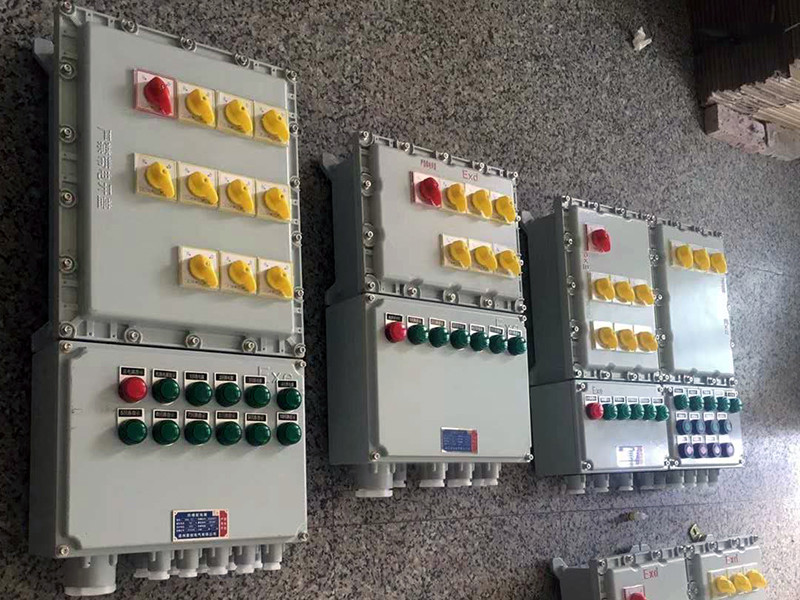Explosion-proof control boxes are primarily used for controlling the distribution boxes of lighting systems and the explosion-proof boxes of power supply systems. They can be customized with different enclosure materials as per user requirements, commonly utilizing aluminum alloy, stainless steel, and rare insulating materials. These control boxes are mainly employed in explosive hazardous environments and include components like circuit breakers, contactors, thermal relays, converters, signal lights, buttons, etc., with component brands selectable according to user preferences.

1. During installation, inspect the parts and components as well as the dimensions to avoid any omissions.
2. When installing the control box, avoid striking, touching, or scratching the explosion-proof surfaces to ensure they remain smooth.
3. The box should not be struck with screws or nuts, nor should inappropriate screwdrivers and wrenches be used during installation.
4. Prior to assembling the electrical components in the control box, conduct a pressure test as required, maintaining a pressure of 1MP for 10-12 seconds.
5. When assembling the electrical parts of the box, ensure the explosion-proof box is installed in the correct location and secured firmly to guarantee stability.
6. Mark the assembled box with a marker, ensuring clear and complete line numbering. Pay attention to the order of colors and wire diameters when wiring to prevent confusion and ensure clarity.
7. After installation, perform a trial run as per the electrical design requirements.
8. Tighten the cable bundles and install the trunking covers after the trial run, checking that the ground wire is properly connected.
9. Before tightening the box cover, evenly apply 0.1-0.3mm3# calcium-based grease to the explosion-proof surface of the box to prevent corrosion and water ingress.
10. When fastening the cover, use a tightening torque of 18N,m, applying screws in a symmetrical, progressive, and uniform crosswise manner.
11. After installation, tighten the box cover with a plug gauge and check the explosion-proof gap, ensuring the maximum gap is no less than 0.1mm.
12. Once assembly is complete, clean the surface of the explosion-proof box. Appropriately package it with foam to prevent damage to the box’s structure and surface coating during transportation and installation, and to avoid water ingress.
 Shenhai Explosion-Proof
Shenhai Explosion-Proof
